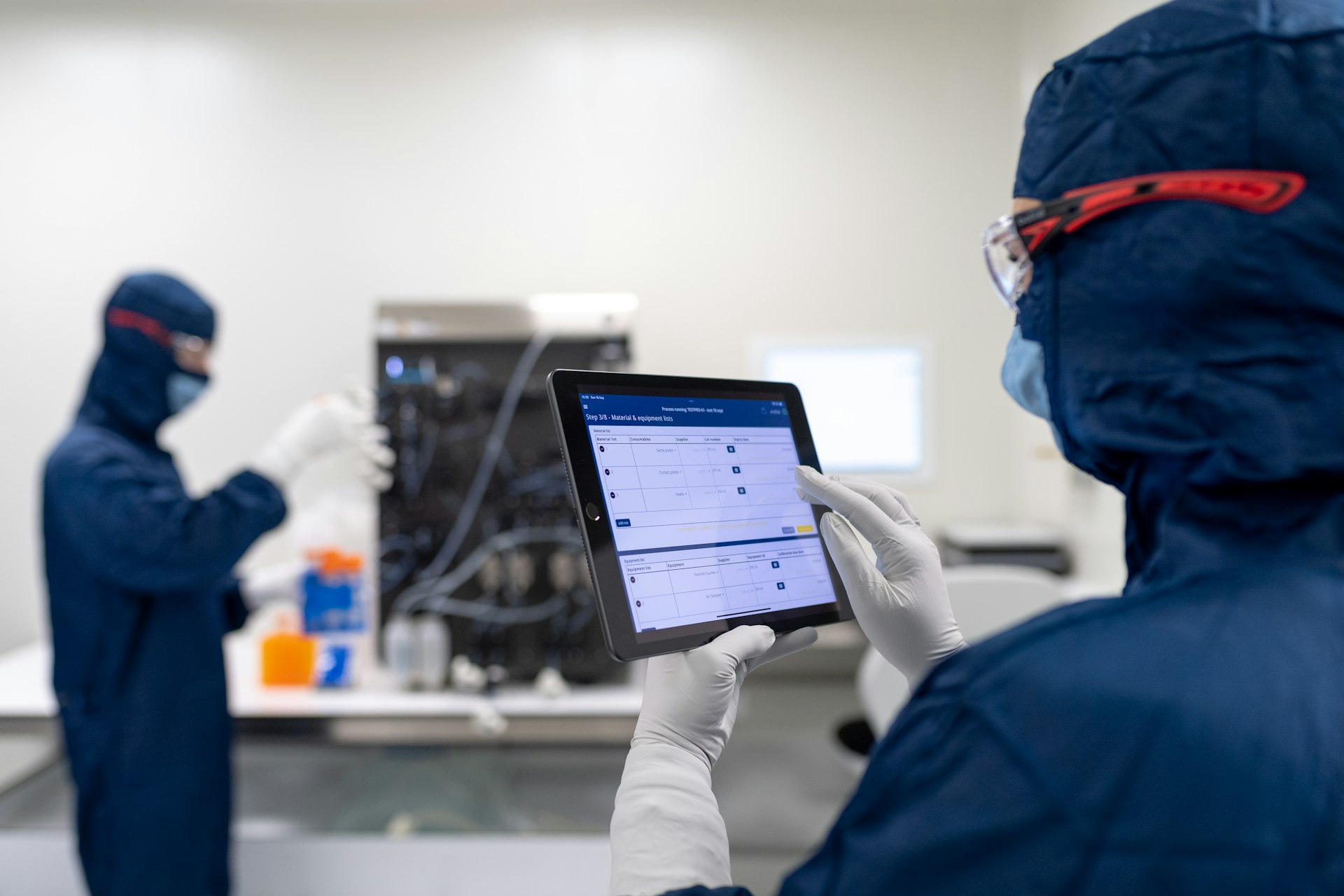Unlocking the Power of Healthcare: Why Interoperability Matters More Than Ever


Photo by Toon Lambrechts on Unsplash
Introduction: The Critical Role of Interoperability in Modern Healthcare
Interoperability in healthcare technology is no longer a luxury-it’s a necessity. As the healthcare landscape evolves, care providers, payers, and patients demand seamless access to medical data, regardless of where or how it was generated. Interoperability enables different health systems, devices, and applications to communicate, exchange, and interpret data accurately, breaking down silos and supporting coordinated, high-quality care. This article explores the importance of interoperability in healthcare technology, the tangible benefits it offers, detailed implementation guidance, and real-world examples to help organizations and individuals access and maximize interoperable solutions.

Photo by fr0ggy5 on Unsplash
What is Healthcare Interoperability?
Healthcare interoperability refers to the ability of diverse information systems, devices, and applications to access, exchange, integrate, and cooperatively use data in a coordinated manner. Think of it as a universal language that allows electronic health record (EHR) systems, pharmacy databases, laboratory software, and even patient-worn devices to share and interpret data consistently [5] . Without interoperability, critical patient information remains siloed, leading to inefficiencies, higher costs, and potential risks to patient safety.
Key Benefits of Healthcare Interoperability
1. Improved Patient Outcomes
At the heart of interoperability is better patient care. Seamless data exchange ensures that providers have comprehensive, real-time access to medical histories, allergies, medications, and recent test results. This enables more accurate diagnoses, reduces medical errors, and supports personalized treatment plans. For example, an emergency physician can immediately access a patient’s cardiology results, even if performed at another hospital, leading to faster, safer care decisions [1] .
2. Enhanced Efficiency and Cost Reduction
Interoperability streamlines clinical workflows by eliminating redundant tests and manual data entry. When health data is easily shared, patients aren’t subjected to unnecessary repeat imaging or laboratory procedures. This not only saves time but also reduces the overall financial burden for patients and healthcare systems [3] . Administrative costs decrease as processes such as prescription management and insurance reimbursement become more automated and accurate.
3. Patient Empowerment and Experience
With interoperable systems, patients gain access to their own health records through secure online portals. This transparency empowers individuals to take an active role in their care, seek second opinions, and manage chronic conditions more effectively. Patients no longer need to repeatedly recount their medical history at every provider visit, improving satisfaction and trust in the healthcare process [3] .
4. Reduction in Medical Errors
Errors in healthcare often stem from incomplete or inaccessible information. Interoperable systems can issue alerts about potential drug interactions, allergies, or conflicting treatments, greatly enhancing patient safety. When all relevant data is available at the point of care, clinicians can make safer, more informed decisions [2] .
5. Population Health Management and Research
Aggregated, anonymized data from interoperable systems allows public health officials and researchers to identify trends, disease outbreaks, and healthcare disparities across communities. This supports targeted interventions, preventive strategies, and resource allocation to improve health outcomes on a larger scale [2] .
Real-World Examples of Interoperability in Action
Consider a patient with multiple chronic conditions who visits different specialists. With interoperable EHRs, each provider can view the complete history, coordinate medications, and avoid duplicative tests. In another scenario, wearable devices transmit real-time blood pressure data to a provider’s system, supporting proactive intervention without the patient needing to visit the clinic [5] .
How to Access and Implement Interoperable Healthcare Solutions
Step 1: Assess Current Systems
Begin by evaluating your organization’s existing technology infrastructure. Identify which EHRs, lab systems, and external devices are in use. Then, determine which standards (such as HL7, FHIR, or DICOM) these systems support. If you are an individual patient, inquire with your providers about their use of interoperable platforms and your access to a centralized patient portal.
Step 2: Select Solutions That Support Industry Standards
Look for vendors and products that adhere to widely recognized interoperability standards. The adoption of standards such as HL7 FHIR (Fast Healthcare Interoperability Resources) is critical for ensuring smooth data exchange. When evaluating new software or devices, request documentation on their interoperability capabilities and compatibility with other systems.
Step 3: Engage Stakeholders and Ensure Compliance
Successful interoperability initiatives require collaboration across IT, clinical, and administrative teams. Engage all stakeholders early in the process to define data-sharing goals, privacy concerns, and workflow needs. Familiarize yourself with regulatory requirements, such as the CMS Interoperability and Patient Access Final Rule. Providers and payers may need to build or access secure APIs as mandated by U.S. law [3] .
Step 4: Implement and Test Data Exchange
After selecting interoperable solutions, perform thorough testing to ensure seamless data flow between systems. Develop protocols for data validation, user authentication, and security. For patients, request access to your health records via provider portals and verify the completeness of your data.
Step 5: Train End-Users and Monitor Performance
Invest in training for clinicians, administrative staff, and patients to maximize the benefits of interoperable systems. Set up ongoing monitoring and support to address any technical issues or workflow disruptions promptly.
Addressing Common Challenges in Healthcare Interoperability
Despite the clear benefits, interoperability projects often face hurdles:
- Data Silos: Legacy systems or proprietary software may resist integration. Overcoming this requires phased technology upgrades and vendor collaboration.
- Privacy and Security: Data sharing must comply with HIPAA and other privacy laws. Implement robust encryption, user authentication, and audit trails to protect sensitive information [4] .
- Resource Constraints: Smaller organizations may lack technical expertise or funding. Consider phased rollouts, cloud-based solutions, or partnerships with regional health information exchanges.
- Change Management: The shift to interoperable workflows requires cultural and behavioral change. Leadership support and clear communication are essential.
Alternative approaches, such as regional health information exchanges, cloud-based platforms, or public-private partnerships, can offer practical pathways for organizations with limited resources.
Regulatory Landscape and Policy Guidance
Government policy increasingly supports interoperability. In the U.S., the Centers for Medicare & Medicaid Services (CMS) and the Office of the National Coordinator for Health Information Technology (ONC) set requirements for data sharing and patient access. Healthcare organizations should regularly consult official CMS and ONC resources for updates and compliance guidance. Patients and providers can search for the latest rules and implementation guides directly on the CMS and ONC official websites.
How Patients and Providers Can Get Started
For Healthcare Organizations: Begin by conducting a technology audit and engaging with certified EHR vendors who support interoperability standards. Connect with your regional health information exchange for guidance and networking opportunities. Regularly review official government resources for policy updates and available technical assistance.
For Individual Patients: You can request access to your health records via your provider’s patient portal. If unsure, ask your provider’s office about their interoperability capabilities and how you can consolidate your medical history from multiple sources. For further support, search for “patient access to health records” on the Department of Health and Human Services website or contact your state health department for consumer resources.
Conclusion: Building the Future of Connected Care
The importance of interoperability in healthcare technology cannot be overstated. By eliminating data silos, reducing costs, empowering patients, and supporting better clinical decisions, interoperability lays the foundation for a more efficient, equitable, and patient-centered healthcare system. Whether you are a healthcare provider, administrator, or patient, taking proactive steps to support and access interoperable solutions is critical to navigating the future of healthcare.
References
- Net Health (2024). The 5 Benefits of Interoperability in Healthcare.
- 4medica (2023). 8 Benefits of Interoperability in Healthcare.
- Oracle (2024). Interoperability in Healthcare Explained.
- HIPAA Journal (2023). Interoperability in Healthcare.
- Symplr (2024). Why is Interoperability Important in Healthcare?






